| Home |
| Acknowledgments |
| Conventions |
| Glossary |
| Maps |
| References |
| Links |
| Articles |
| Thumbnails |
| Species
list |
| Family |
| Next
species |
Additional Photos

on white
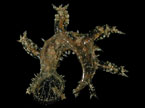
underside

oral hood

side detail

cerata detail
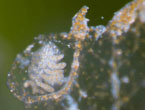
zooxanthellae

on Halimeda

young, 7 mm
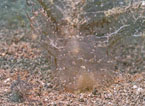
feeding
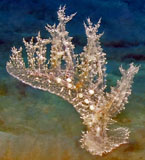
swimming
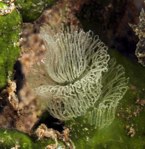
egg mass
_______________
GALLERY

Melibe engeli Risbec, 1937
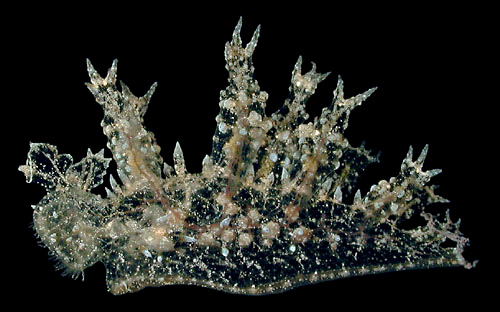
| Maximum size: 60 mm (an animal that was probably over 100 mm was seen but not measured). Identification: This species has a transparent body lightly frosted with brown flecks. Because of its transparency, the brown branches of the digestive gland and globular gizzards can be seen through the body wall. (see photo of same animal on white). The cerata are cylindrical and tuberculate with flattened, leaf-like tips (tubercles may be compound in some animals). The notum is covered with elongate papillae and there are leaf-like crests on the posterior margins of the rhinophore sheaths. The tips of the tubercles, cerata and papillae are tinged with blueish white. Natural history: Melibe engeli is a common species found in Halimeda kanaloana beds at depths of 5-18 m (16-49 ft). In that habitat, it is one of the most numerous opisthobranchs, sometimes occurring in large blooms. (Note 1) In addition, it is occasionally found in protected to moderately exposed rocky habitats at depths of as little as 1 m (3 ft). However, it can swim readily by lateral flexing and most animals found in rocky habitats were in "catchment" areas down-current of Halimeda beds suggesting that they may have been carried in from deeper water. (Note 2) It appears to feed primarily at night when it moves to the tips of the algae and sweeps the water rhythmically with its hood. (Note 3) During the day, it conceals itself in the algae rather than under rubble. (Note 4) It lays a delicate, telescoping coil of white to tan eggs with 3 to 5 whorls (usually on algae). Hatching may occur in as little as two days in the laboratory. Distribution: Big Island, Maui, Oahu and French Frigate Shoals: widely distributed in the Indo-Pacific. Taxonomic notes: It was first recorded in Hawaii from Hekili Point, Maui by CP on Sept. 27, 1993. Photo: CP: Black Rock, Maui; Nov. 11, 2003. Observations and comments: Note 1: The largest bloom we've encountered was in the Halimeda kanaloana beds at Wahikuli, Maui on Oct. 25, 1995. Many thousands of animals were visible covering the Halimeda and we spent the entire dive in a cloud of swimming Melibe engeli disturbed be our passage. Note 2: Of the few dozen animals we've seen in rocky habitats, only four were 3 to 11 mm in length. In contrast, animals as small as 3-4 mm are common in Halimeda kanaloana beds. That suggests that larval settlement may be largely confined to Halimeda kanaloana (perhaps, with the few small juveniles found in rocky habitats settling on other Halimeda spp.). Also, an aggregation of about 14 large animals was observed on multiple occasions in a catchment area at Hekili Point, Maui between Sept 27 and Oct 16, 1993. When checked after a period of high surf on Oct. 27, only one could be located. On Nov. 1, there were 12 animals at the site but they appeared to be smaller than the animals in the previous aggregation suggesting turnover. On Nov. 9 only one could be found. This supports the idea that drifting/swimming animals are being deposited and dispersed by currents and surf. Note 3: On multiple occasions in fall, 1993 we observed large animals actively feeding at night. Despite an extensive search we couldn't find any by day suggesting that they'd concealed themselves deeply within the algae. None were found under rubble although a comprehensive search wasn't done. Note 4: Its transparent body with fine brown flecks combined with its habit of feeding at night while resting in algae (rather than under rubble) during the day supports the suggestion that M. engeli may supplement its food with zooxanthellae in the manner of Melibe megaceras. (see photos) |
| Thumbnails |
Species
list |
Family | Next species | Top |